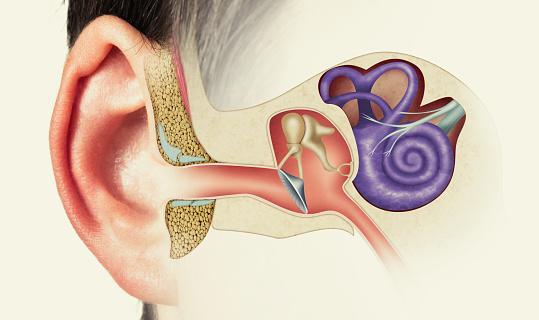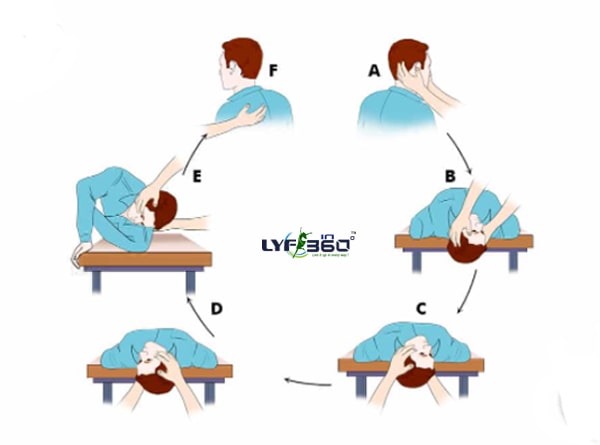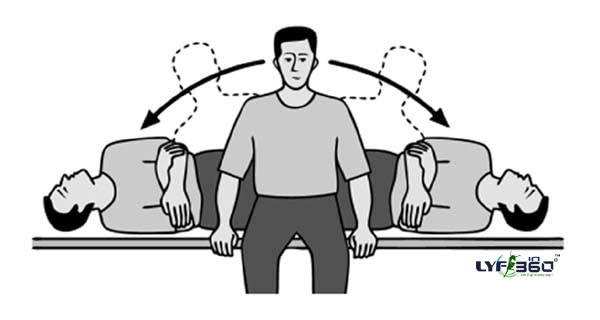
An issue with your inner ear, which governs balance, causes peripheral vertigo. Problems with your brain or brainstem are referred to as central vertigo. Peripheral vertigo can take many distinct shapes.
Peripheral Vertigo is a type of vertigo that feels like it’s whirling. It might also make you feel dizzy or as if you’re tilting to one side. Vertigo can cause a variety of other symptoms, including:
- Ringing in your ears due to hearing loss in one ear
- Have trouble concentrating or focusing your eyes
- A loss of equilibrium (balance)
- Vomiting
Vertigo is divided into two types:
Peripheral vertigo and Central vertigo. Peripheral vertigo is frequently more severe than central vertigo, according to the American Institute of Balance.
Causes of vertigo
A dysfunction in the region of the inner ear that governs balance causes peripheral vertigo. The vestibular labyrinth, or semi-circular canals, are these locations. The vestibular nerve might potentially be involved. The nerve that connects the inner ear to the brain stem is this one.
Peripheral vertigo can be induced by a variety of factors, including:
- Positional vertigo is a type of benign vertigo that occurs when a person is (benign paroxysmal positional vertigo, also known as BPPV)
- Certain drugs are toxic to the inner ear structures, such as aminoglycoside antibiotics, cisplatin, diuretics, or salicylates.
- Injuries (such as head injuries)
- The vestibular nerve is inflamed (neuronitis)
- Inner ear irritability and edema (labyrinthitis)
- Meniere’s disease is a neurological condition that affects
- A noncancerous tumor, such as a meningioma or schwannoma, places pressure on the vestibular nerve.
Central vertigo can be caused by a variety of factors, including:
- Central vertigo is caused by a disorder in the brain, most commonly in the brain stem or the rear section (cerebellum)
- Inflammation of the blood vessels
- Certain medications, such as anticonvulsants, aspirin, and alcohol, can cause seizures.
- Multiple sclerosis (MS) is a neurological illness that affects people of all ages.
- Convulsions (rarely)
- Tumors of the Stroke (cancerous or noncancerous)
- A vestibular migraine is a form of migraine headache that affects the ears.
Types of peripheral vertigo
- Vestibular neuronitis
Vestibular neuritis is another term for vestibular neuronitis. Unsteadiness, earache, nausea, and vomiting are all symptoms of this form of vertigo.
Vestibular neuronitis occurs when an infection spreads to the vestibular nerve, which regulates balance. This disease frequently occurs after a viral illness such as the flu or a cold.
- Labyrinthitis
Dizziness or the sensation that you’re moving when you’re not is a symptom of labyrinthitis. This type of vertigo is caused by an infection of the inner ear.
As a result, it frequently occurs in conjunction with other symptoms including fever and earache. The infection lies in your labyrinth, which is a structure in your inner ear that regulates balance and hearing.
This infection is frequently caused by a viral disease such as a cold or flu. A bacterial ear infection might potentially be the culprit.
- Benign paroxysmal positional vertigo (BPPV)
The most prevalent type of peripheral vertigo is known as BPPV. Short, frequent attacks of vertigo are common with this kind. BPPV is triggered by certain head motions.
Tiny particles of anatomical debris breaking off from the inner ear canals are assumed to be the cause, activating the small hairs that line your inner ear. This causes your brain to get confused, resulting in dizziness.






Its in truth a great post. I am sure that anyone would like to visit it again and again. After reading this post I got some very unique information which are in fact very helpful for anyone. This is a post owning some crucial information. I wish that in future such posting should go on.